Rigging Training: What It Covers and Why It’s Crucial for On-Site Safety
Boost your career and enhance workplace safety by investing in rigging training. Acquire essential skills, tools, and methods to operate heavy equipment safely.
Boost your career and enhance workplace safety by investing in rigging training. Acquire essential skills, tools, and methods to operate heavy equipment safely.

The Bureau of Labor Statistics reported 5,283 fatal work injuries in the United States in 2023, many of which were related to falls, slips, trips, and transportation injuries. A significant percentage of these tragedies could have been prevented with proper safety rigging training.
Designed to improve your crew’s safety awareness and technical skills, rigging training minimizes the risk of serious injuries, damaged equipment, and costly delays. It ensures the compliance standards are met; all while protecting your employees, increasing workplace efficiency, and helping your company progress.
In this guide, we’ll walk you through the basics of rigging training, including its types, key components, and benefits, so you have a clear understanding of its potential.
Rigging training is a formal educational program designed to teach workers how to lift, move, and load heavy materials safely. It involves teaching safe use of cranes, slings, ropes, and hitches; blending safety knowledge with hands-on skills. The goal is to prevent injuries and equipment failure by ensuring workers can:
This type of training is closely aligned with OSHA’s safety standards and has been proven to reduce the incidence of accidents. Research shows that workplaces that implement effective safety programs, including rigging courses, experience 40% fewer workplace accidents.
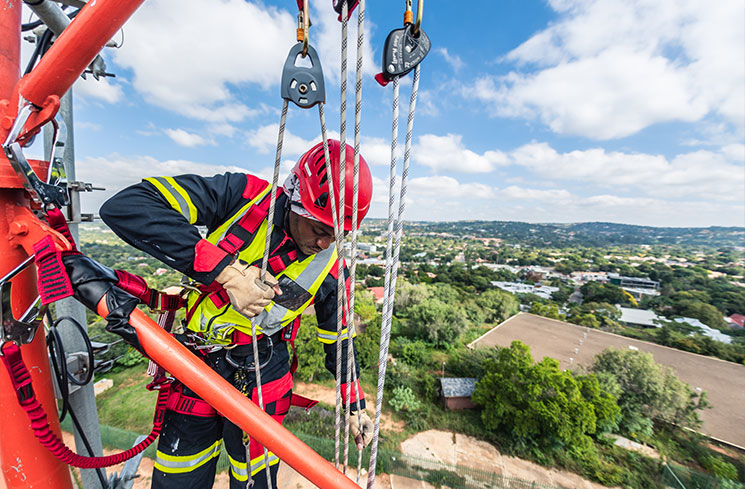
There are four main types of rigging training courses: basic rigging, intermediate rigging, advanced rigging, and rigging certification. Although each level covers different skills and responsibilities, all are essential, considering that a worker dies every 99 minutes due to a work-related injury. Many of these incidents are linked to lifting, hoisting, and material handling.
These courses are designed to equip workers with the knowledge and hands-on skills needed to prevent accidents. Here’s an overview of each type of rigging training course:
This is an entry-level rigging course for those who are new to the field or assisting experienced riggers in routine operations. It focuses on foundational safety procedures and standard lifting tasks, involving low-risk, predictable loads. The aim is to prepare workers for more complex tasks by introducing them to a controlled environment.
This training typically includes:
Intermediate rigging is a continuation of the basic rigging course. It’s for workers who are now ready to manage more complex rigging operations with reduced supervision. Compared to basic training, the scope of intermediate training is broader and more complicated.
While basic rigging involves managing a single crane, intermediate rigging training teaches workers how to handle multiple cranes and more advanced lifting operations. Therefore, only workers who have taken the basic rigging course are qualified to apply for this course.
Intermediate rigging focuses on:
This is a more complex type of rigging training, specifically designed for experienced riggers who are responsible for planning and executing high-risk lifts and transportation operations. At this stage, the rigger not only performs tasks but also plans operations, evaluates risk, and oversees compliance.
It covers topics such as:
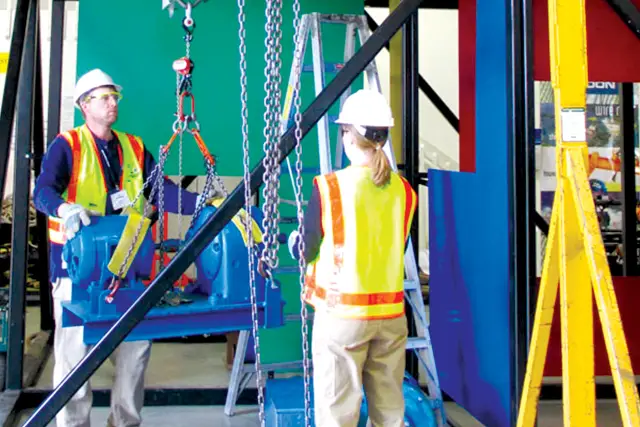
The certification programs are primarily designed for workers who are already in the construction industry and have prior experience in rigging, but are not yet certified. These programs validate the worker’s skills through standardized assessments and offer recognized certifications. Most certifications, such as Rigger Level I and Rigger Level II, combine content from both the basic and advanced training courses.
When lifting operations go wrong, the consequences can be devastating, resulting in serious injuries to the workforce and damage to heavy equipment. This is why quality rigging training is important, which includes all key components of a comprehensive rigging training program.
The most important aspect of rigging training is understanding and selecting suitable rigging equipment. Not all loads are equal, and neither is the gear used to lift and move them.
With rigging training, workers are taught to select the appropriate combination of slings, shackles, rigging hardware, and fiber ropes. Selecting the wrong equipment, especially gear that isn’t compatible with the load’s center of gravity, can lead to dropped loads, tip-overs, and severe workplace accidents.
Besides the types of equipment used, rigging training also teaches workers to check the equipment for its optimal condition. Even the highest-quality sling can fail if it’s corroded or improperly stored.
Rigging training places strong emphasis on the importance of regular equipment inspection, especially before each use. Workers are trained to identify signs of wear and tear so that damaged equipment can be kept aside. This practice aligns with the OSHA regulations, such as 1926.251(a)(1), which requires thorough inspection of equipment prior to each use.
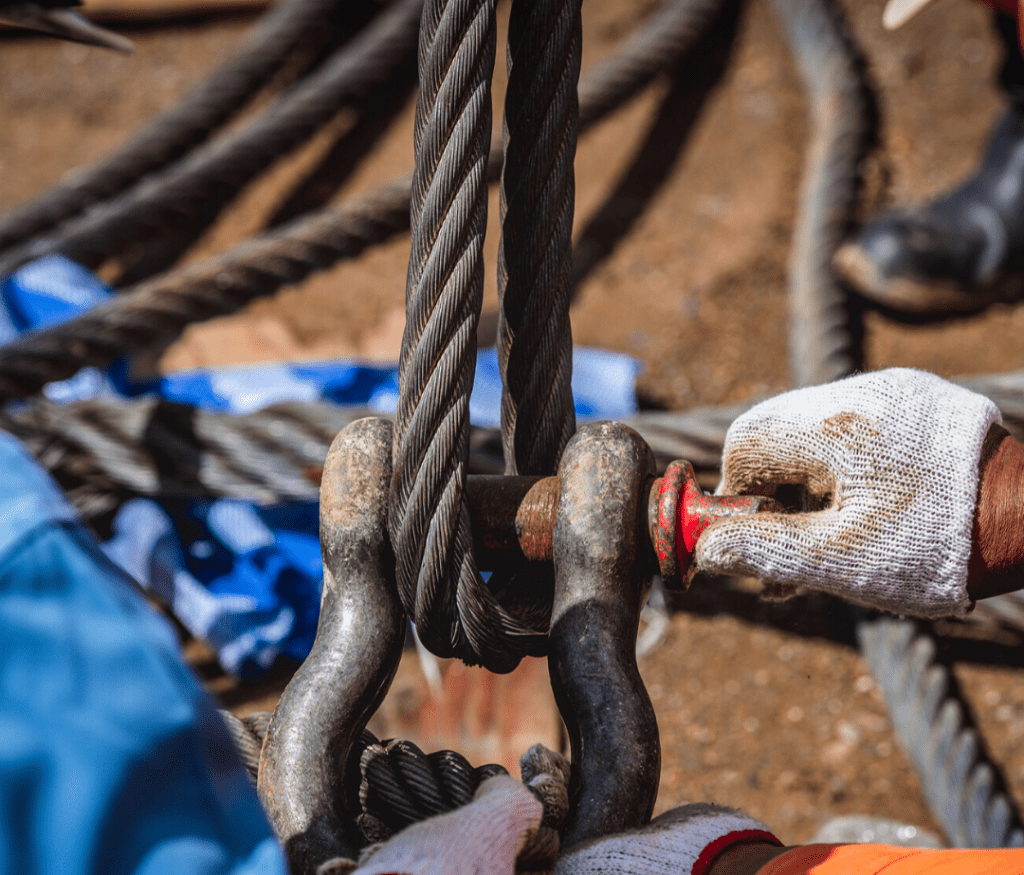
Knowing which gear to use is not enough. Your workers need to understand how to use the gear safely. A comprehensive rigging training incorporates best practices for load balancing, correct sling angles, and avoiding dangerous maneuvers such as shock loading.
Safe rigging also helps understand the limitations of each piece of equipment. Overloading a sling, using damaged hardware, or not calculating the sling angles properly can turn a routine lift into a safety hazard. Rigging training teaches workers how to anticipate these risks and make an informed decision.
Rigging techniques vary depending on the complexity of the job. Training programs expose workers to different rigging methods, from basket hitch to bridle sling. It helps the workers understand which technique is best suited for specific lifting conditions.
In addition to hands-on training, it also covers the critical calculations behind each lift. It teaches riggers precisely how to calculate load angles, sling tension, and the center of gravity, skills that are essential for minimizing the risk of accidents.
A large number of workplace accidents happen not because of poor technique, but because of unclear instructions and misinterpreted signals. That’s why rigging training teaches a standardized communication protocol to all the workers. Whether it’s hand signals, wireless radios, or even a whistle, rigging training ensures there’s no communication gap among the workers. This helps them communicate in noisy environments like construction sites, preventing fatal accidents.
Rigging training is a proactive investment in both safety and career development. Whether you're an employer seeking to reduce workplace risks or a worker aiming to expand your skill set and advance your career, rigging training is essential. Here are some of its job training benefits:
According to the National Safety Council (NSC), workplace injuries cause US employers almost $171 billion annually. Many of these injuries are related to lifting and transportation, resulting in a major setback to workplaces.
Rigging training significantly reduces the risk of these injuries by ensuring that everyone on site is familiar with the standard safety protocol. This not only protects your team from injury but also helps companies avoid the high costs associated with medical expenses, workers’ compensation claims, and potential legal issues.
Dropped loads or improper lifts can damage expensive equipment, resulting in significant financial losses and project delays. This kind of damage and project delays can tarnish the company's credibility, leading to high financial losses.
Rigging training teaches the proper handling of lifting and transportation equipment to prevent costly downtime. From selecting the right rigging hardware to understanding load limits, rigging training reduces the likelihood of equipment failure.
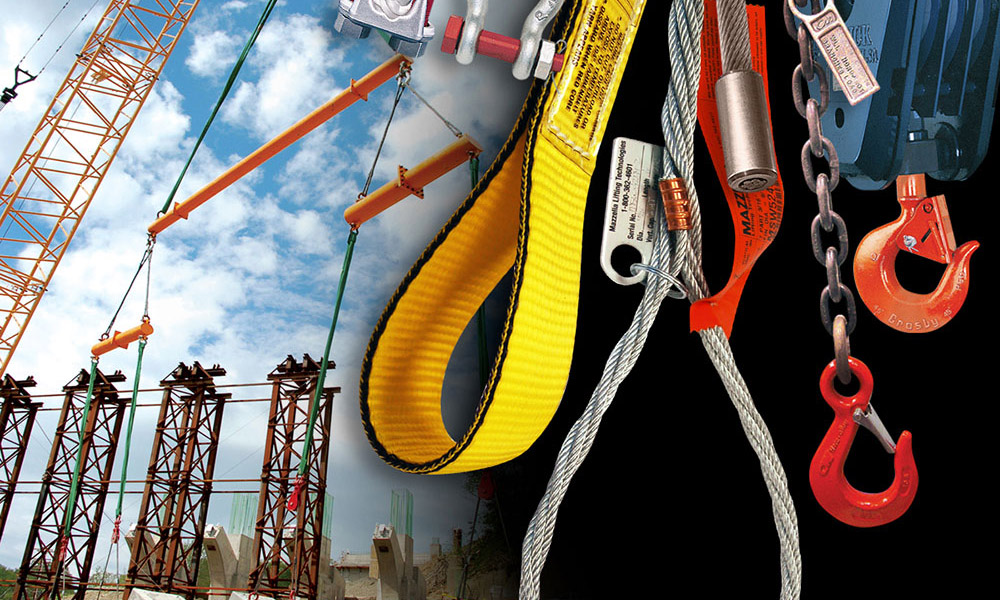
Skilled workers complete the job faster, more safely, and within budget. This is because experienced workers are less likely to cause damage to the equipment or injure themselves.
With experienced riggers on your team, everyone understands their roles and communicates effectively. This allows operations to run smoothly and efficiently. When each team member knows how to handle equipment and follow safety protocols, the workflow becomes significantly more productive.
Compliance with safety standards is critical in a high-risk environment like a construction site. This is why organizations like OSHA in the US mandate that rigging be performed by trained personnel to ensure both worker and site safety.
Meeting these regulations not only protects your workforce but also shields your company from costly fines and legal repercussions. Learn how employers can streamline OSHA training here.
For workers, rigging training isn’t just about safety. Certified riggers are in higher demand in heavy industries, enjoy better job stability, and have a higher pay scale. It’s a career accelerator that opens pathways to promotions in roles such as rig operator or rigging supervisor.
Besides teaching essential technical skills, rigging training also emphasizes communication protocols, like hand signals and radio communication. This promotes teamwork and efficiency, which helps build uninterrupted on-site coordination. Since rigging isn't a solo job, effective teamwork is the backbone of safe and successful lifting operations.
When all the people on the field, such as crane operators and signalers, coordinate effectively, the work gets done faster and more efficiently.
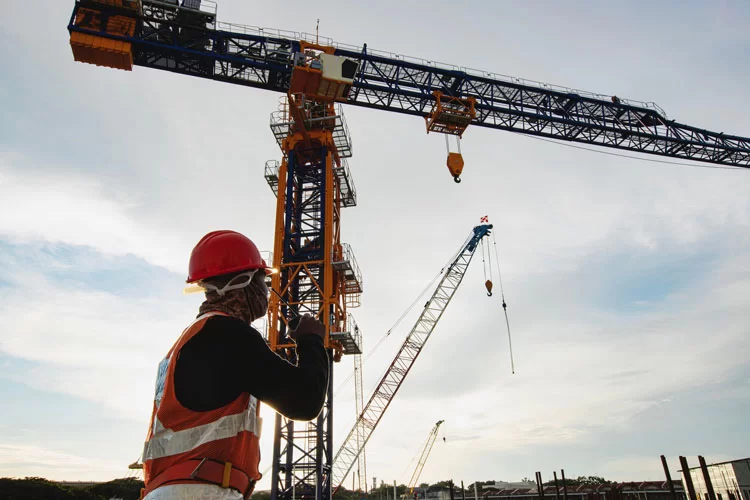
Rigging training courses often include practical scenarios and problem-solving exercises to address unexpected issues, such as lift failure. This helps the workers develop critical thinking skills and allows them to make informed decisions under pressure.
By strengthening problem-solving skills, workers are better equipped to respond safely in high-risk situations.
The best part about rigging training methods is that they can be customized to your needs. Whether you're aiming for convenience or hands-on experience, there's a format designed to suit you. Here are the three most common rigging training methods used by professionals:
The traditional ‘classroom training’ format remains a favorite for good reason. It provides a structured environment where workers can focus, ask questions, and engage in guided discussions. This also improves training engagement by making the session interactive.
Classroom-based rigging training focuses on in-depth lectures and real-time Q&A sessions, ideal for those who prefer live interaction with the instructors. They’re typically held at training centers, followed by on-site demonstrations and fieldwork to ensure the knowledge is passed on properly.
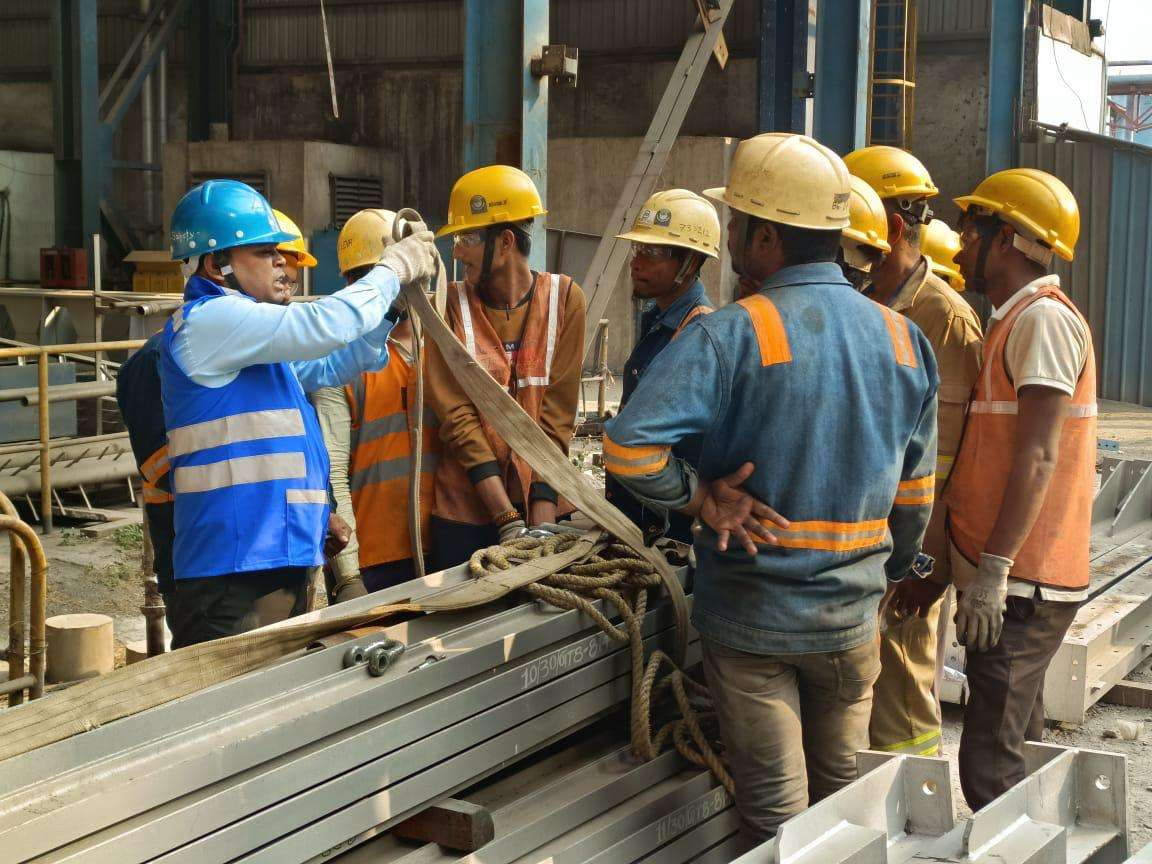
For workers with demanding schedules and remote job sites, online training offers flexibility without compromising content quality. The self-paced programs are hosted through renowned Learning Management Systems (LMS) that allow participants to learn at their own pace.
Online training is particularly useful for introductory theory, regulatory guidelines, and OSHA compliance basics. Progress monitoring in online training is also easier as it allows you to track how your employees are doing with a simple click. It’s a cost-effective solution for companies looking to scale their training programs across multiple locations.
Coursebox LMS Platform:
Coursebox offers an advanced Learning Management System that enables you to create effective rigging training courses with ease. With an AI quiz generator, you can train your workers from anywhere, testing their knowledge and reinforcing learning.
All you need to do is upload PDF files of the training content, and Coursebox will transform it all into AI-generated training videos.
If your team learns best in a classroom setting, instructor-led training is a great option. Both live and virtual instructor-led training work great. However, online training is increasingly sought after, as it combines the benefits of face-to-face teaching with the flexibility of online courses, offering the best of both worlds.
Rigging training courses typically take a few hours to a few days. The duration mainly depends on the course level and certification requirements. If you’re pursuing rigging as a long-term career, investing in rigger training can get you a competitive edge over other workers.
A level 3 rigger is an experienced worker who is already experienced in rigging. Level 3 riggers must know how to inspect rigging before use, correctly identify and attach rigging with basic knowledge of hitch configurations, recognize associated hazards, signal operations, and use of different rigging equipment.
To become a trained rigger, you’ll need to complete a rigging training course that follows OSHA-aligned standards. These courses are offered by accredited safety training centers or institutions and cover the essential skills needed to perform rigging tasks safely.
In high-risk industries, your greatest assets are not just machines and materials; they are your workers. Without experienced workers, these machines are merely pieces of metal.
Equipping your team with rigging training is one of the smartest decisions you can make for your workplace. It doesn’t just protect your team but also helps you save significantly by reducing accidents, downtime, and costly errors.
If you're ready to equip your team with essential rigging skills, consider using Coursebox. It is a trusted platform for delivering practical, OSHA-aligned training that prepares workers for real-world challenges.
Start your free trial today and take the first step toward a safer worksite.
